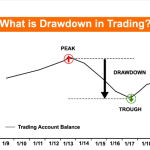
By ATGL
Updated February 23, 2025
Understanding profitability is crucial for investors and business owners alike. One key metric that stands out is EBITDA margin, a powerful tool for evaluating company performance. This margin not only reveals operational efficiency but also helps in comparing firms across different industries.
EBITDA, or Earnings Before Interest, Taxes, Depreciation, and Amortization, offers a clear picture of a company’s profitability without the noise of financing and accounting choices. Calculating the EBITDA margin is straightforward and can be a game-changer for making informed business decisions. Understanding this metric can empower stakeholders to identify opportunities for growth and areas needing improvement.
In this article, we will delve into the definition of EBITDA margin, explore its formula, and learn how to calculate it step-by-step. We’ll also discuss its advantages and limitations, compare it to other profitability measures, and examine its application in the stock market. Whether you’re a seasoned investor or a budding entrepreneur, this comprehensive guide will equip you with valuable insights into mastering the EBITDA margin.
What is EBITDA Margin?
EBITDA margin is a key financial metric that reflects a company’s core operational efficiency. It measures earnings as a percentage of revenue, excluding the effects of interest, taxes, depreciation, and amortization. This focus on operational performance provides a clearer picture of a company’s financial health by eliminating non-operational expenses.
To calculate EBITDA margin, you start with operating income. Then, add back non-cash expenses such as depreciation and amortization. Do not include capital expenses. The formula is:
$$ \text{EBITDA Margin} = \left(\frac{\text{EBITDA}}{\text{Total Revenue}}\right) \times 100
This margin is particularly useful for comparing companies in the same industry by focusing on their core business activities. Because it excludes accounting decisions and non-operating expenses, the EBITDA margin offers investors and analysts a clear view of a company’s operational profitability.
- Key Elements:
- Operating Income
- Depreciation
- Amortization
The EBITDA margin is an important measure of profitability, helping assess both operational performance and financial health. It highlights the ability of a company to generate profits from its core operations, making it an essential tool for evaluating potential investments.
How to Calculate EBITDA Margin
Understanding how to calculate the EBITDA margin is essential for anyone looking to assess a company’s financial health. This key metric provides insight into a company’s operational efficiency and profitability. It eliminates non-operational expenses, offering a clearer picture of a company’s core business activities.
EBITDA Margin Formula
The EBITDA margin formula is straightforward but powerful. It is calculated as EBITDA divided by total revenue, then multiplied by 100 to express it as a percentage:
$$ \text{EBITDA Margin} = \left(\frac{\text{EBITDA}}{\text{Total Revenue}}\right) \times 100
To find EBITDA, use the equation:
$$ \text{EBITDA} = \text{Net Income} + \text{Interest Expenses} + \text{Taxes} + \text{Depreciation} + \text{Amortization}
This margin shows a company’s operating profitability compared to its revenue. It excludes non-cash expenses, allowing for comparisons of financial health and operational efficiency across similar industries.
Step-by-step Calculation
- Gather Financial Data: Start by obtaining the company’s net income, interest expenses, taxes, depreciation, and amortization from the income statement.
- Calculate EBITDA:
$$ \text{EBITDA} = \text{Net Income} + \text{Interest Expenses} + \text{Taxes} + \text{Depreciation} + \text{Amortization}- Use the formula:
- In Excel, place each element in separate cells and use the SUM function to add them up.
- Calculate EBITDA Margin:
$$ \text{EBITDA Margin} = \left(\frac{\text{EBITDA}}{\text{Total Revenue}}\right) \times 100- Divide the EBITDA by total revenue.
- Multiply the result by 100 to get a percentage.
This calculation provides insights into how effectively a company turns its revenue into operating profits. A higher EBITDA margin suggests efficient cost management, appealing to investors and shareholders. Use this approach to spot areas for operational improvements, especially if the margin is low, indicating potential efficiency gains.
Advantages of Using EBITDA Margin
EBITDA margin provides a clearer view of a company’s operational health and profitability. By excluding interest, taxes, depreciation, and amortization, it focuses on core business activities. This metric highlights operating performance by eliminating non-operating expenses.
A high EBITDA margin indicates fewer operating expenses compared to total revenue. This suggests profitable operations and financial stability. It reflects true cash-generating ability by showing how much cash a company earns for each dollar of revenue.
Investors find EBITDA margin useful for benchmarking performance across companies and industries. It allows them to see how well a company converts revenue to earnings. This measure helps identify companies with stable earnings potential, making them attractive investments.
Advantages of Using EBITDA Margin:
- Focuses on core operations.
- Highlights true cash profitability.
- Simplifies performance comparisons.
- Attracts investors with stable earnings potential.
Using EBITDA margin offers a transparent look at financial health, indicating operational efficiency and profitability ratios beneficial to stakeholders.
Disadvantages and Limitations of EBITDA Margin
EBITDA margin is often used to assess a company’s financial performance, but it has several limitations.
First, it doesn’t account for significant cash outflows like capital expenditures. These outflows are crucial for a company’s financial stability and long-term sustainability. By excluding them, EBITDA margin can present an inflated view of profitability.
Second, EBITDA margin omits essential elements like interest and taxes. Without these, the metric fails to give a complete picture of a company’s financial health. This limitation is especially concerning for companies with high debt. High interest payments can adversely affect financial health, which EBITDA margin does not capture.
Third, it’s important to note that EBITDA margin is not regulated by generally accepted accounting principles (GAAP). This lack of regulation gives companies the freedom to decide how they calculate it, raising the risk of financial data manipulation.
While EBITDA margin can measure operating profitability, it should not be the sole metric for evaluating financial health. For a clearer picture, it is essential to consider other financial metrics.
EBITDA Margin vs. Other Profitability Measures – Gross Profit Margin, Operating Margin, Net Profit Margin
EBITDA margin focuses on a company’s operating efficiency by measuring earnings before interest, taxes, depreciation, and amortization. It provides a clearer picture of operational performance by excluding non-operational expenses.
Here’s a comparison with other profitability measures:
- Gross Profit Margin: This margin looks at earnings post-direct costs like materials and labor. It doesn’t account for other expenses, which might give a skewed view of overall efficiency.
- Operating Margin: This margin reflects operating profit as a percentage of revenue but includes depreciation and amortization, unlike EBITDA margin.
- Net Profit Margin: This margin encompasses all expenses, including interest and taxes. It provides insight into overall profitability but not operational efficiency.
- Return on equity (ROE): Return on equity (ROE) is a key profitability metric that measures a company’s ability to generate profits from its shareholders’ equity, offering valuable insight into financial performance and management effectiveness.
EBITDA Margin Formula:
$$ \text{EBITDA Margin} = \left(\frac{\text{EBITDA}}{\text{Total Revenue}}\right) \times 100
Note, while gross, operating, and net profit margins have their uses, EBITDA margin stands out by highlighting how effectively a company turns revenue into operating earnings, offering valuable insights into core business activities.
How Do You Use the EBITDA Margin?
The EBITDA margin is a key measure of a company’s operational performance. It provides insight into how effectively a company manages its core business activities. This metric is calculated by dividing EBITDA (Earnings Before Interest, Taxes, Depreciation, and Amortization) by total revenue, then multiplying by 100 to get a percentage.
Investors and analysts use the EBITDA margin to assess a company’s ability to convert revenue into operating earnings. This helps in benchmarking performance against industry peers. A high EBITDA margin indicates strong operational efficiency and is favorable in financial health assessments.
Here’s how you can use the EBITDA margin:
- Financial Comparisons: Compare with similar companies or industries to evaluate competitive position.
- Profitability Analysis: Determine operational profitability free from non-cash and interest expenses.
- Trend Analysis: Track over time to identify improvements or declines in operational efficiency.
- Credit Analysis: Monitor changes as a declining margin can affect creditworthiness.
In sectors with high depreciation and amortization costs, such as manufacturing, EBITDA margin offers a clearer picture of financial health and core operational efficiency.
Succeeding in the Stock Market
Succeeding in the stock market requires a keen understanding of financial metrics. EBITDA, or Earnings Before Interest, Taxes, Depreciation, and Amortization, is crucial in evaluating a company’s operating profitability. It excludes non-operating expenses, giving a clearer picture of core business activities. Calculating the fair value of a stock involves assessing various financial metrics, with EBITDA serving as a key indicator to evaluate a company’s operating performance and profitability, which ultimately helps determine its intrinsic value. The rate of return is a critical metric that measures the profitability of an investment, allowing investors to assess the effectiveness of their capital allocation and make informed decisions. Calculating stock return involves measuring the percentage change in the stock’s price over a specific period, factoring in dividends and capital gains to determine the overall profitability of the investment.
Key Steps for Success:
- Understand EBITDA: Recognize its strengths and limitations. While it offers insight into operating performance, it doesn’t reflect total financial health.
- Use Adjusted EBITDA: This variation accounts for non-operating and non-cash items, providing a more comprehensive view.
- Evaluate Broadly: Rely on multiple financial metrics, not just EBITDA, to assess a company’s performance. This approach leads to informed investment decisions.
- Consider Mergers and Acquisitions: In these scenarios, EBITDA helps investment bankers assess and compare financial performance.
By understanding these metrics and their applications, investors can better evaluate financial statements. This leads to smarter decisions and greater success in the stock market. Join Above the Green Line today and learn more.






